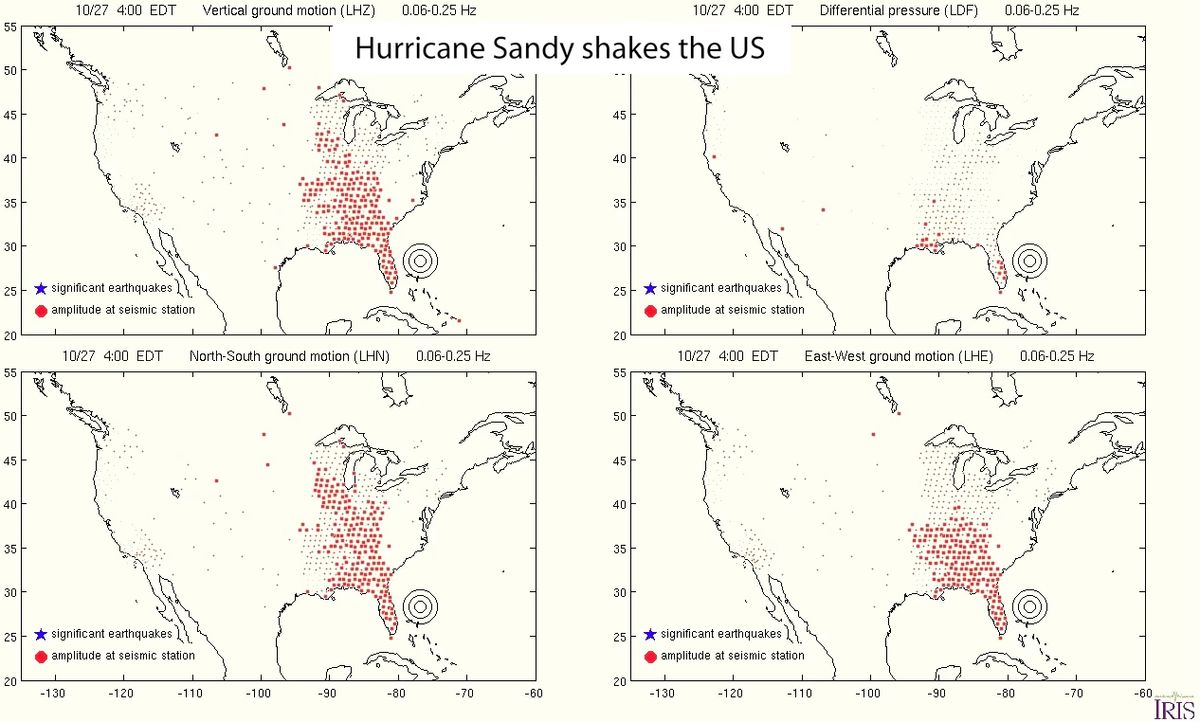
Sandy Shook US Like an Earthquake

Hurricane Sandy pummeled the United States from Florida to Wisconsin, and its fierce winds caused a vast swath of ground to shake, a new earthquake-monitoring animation shows.
The visualization shows seismic stations lit up as the storm approached Florida on Oct. 26. The earthquake monitors detected rolling seismic waves caused by Sandy's fierce winds out at sea.
The earthquake-monitoring network always "hears" a continuous hum of background noise generated in the ocean, called microseism, said Alex Hutko, a seismologist at the Incorporated Research Institutions for Seismology (IRIS) in Seattle, and creator of the Hurricane Sandy animation.
In the movie, the pattern grows stronger as Hurricane Sandy approaches, sending a seeming wave of tremors across the East.
People can't feel the shaking because the movement is extremely small. "These seismic instruments are the most sensitive instruments ever built, and they detect motion on the order of nanometers," Hutko told OurAmazingPlanet.
One panel of the movie also displays atmospheric pressure, showing the cold front that morphed Sandy into what forecasters called a "Frankenstorm" after it moved ashore.
The dense array of ground-shaking seen covering the eastern United States in the animation is the federally operated network of portable seismometers known as the USArray, consisting of 400 broadband seismic stations deployed on a uniform grid. The array has been rolling across the United States from west to east since 2004 to provide scientists with a "CAT scan" of the nation.
Sign up for the Live Science daily newsletter now
Get the world’s most fascinating discoveries delivered straight to your inbox.
This is the first time IRIS data has visualized a hurricane hit the United States, Hutko said. "As this was happening, thought it would be pretty neat to plot. I ended up staying up through the night two nights in a row," he said.
Pounding surf churned up by Hurricane Sandy also set off earthquake monitors along the East Coast before the storm's landfall on Oct. 29. The storm ranks second only to Hurricane Isabel in its kinetic energy, a measure of destructive power.
Editor's note: This story has been updated to correct that Hurricane Sandy was second in intensity to Hurricane Isabel.
Reach Becky Oskin at boskin@techmedianetwork.com. Follow her on Twitter @beckyoskin. Follow OurAmazingPlanet on Twitter @OAPlanet. We're also on Facebook and Google+.
